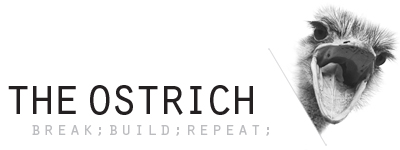
In the previous post, I announced that I am ready to reinvent my personal productivity system.
Today, I present Go Plain: My simplicity-driven personal productivity system. Well, it’s not yet a “personal productivity system”. It’s the working title for my work-in-progress system, and this post is a high-level “manifesto” for this system. I use “manifesto” here loosely, and mostly mean “high level roadmap and requirements”. Just thought it was a fun word to use 🙂 .
You can refer to the Go Plain project page for an always up-to-date list of posts related to this project.
Disclaimer:
This is my personal take on a personal productivity system. As such, it is going to be highly customized to me, my needs, my lifestyle, and my preferences.
I am sharing it here because:
- I want to 🙂
- I believe my situation is not completely unique, so maybe others may benefit from what I share.
Once I have more pieces of my system in place, I plan to come up with a profile of who I think this should work for, and whom it likely won’t. I can guarantee that no one will be able to take my system as is and apply it smoothly. It will surely require cherry-picking or some kind of adaptation.
Go Plain Manifesto
- Simple is good, friction is bad.
- “Less is More”. Use as few “tools” as possible, but not fewer than necessary to make things work smoothly.
- It’s important to be able to “be productive”, independent of which platform and device I happen to use, screen size and resolution, or online / offline status. This portability deserves a lot of thought and effort, but it has limits. Simplicity should not suffer too much. It is not less important to acknowledge the limits, and prioritize.
- Small tools that do one thing well are usually easier to compose in a system, compared to big multipurpose tools that do many things “OK”.
- Flexibility is an asset. Things will definitely change, in unexpected ways. A flexible, loosely coupled system will be easier to adapt.
- Good search wins over good filing & categorization, every time, on every digital platform.
- Wait before automating. Avoid “forcing automation”. Let it emerge from natural usage.
- Prefer widely adopted services over niche ones. They tend to stick around longer, and have wider platform support. For example, Dropbox over SugarSync for cloud-based file syncing.
- Prefer sticking to the basic, essential, stable & robust feature of chosen services. Esoteric features might be useful for esoteric scenarios, but the features may disappear, or be unreliable for the long run.
- Open source is better than proprietary, but it’s definitely OK to pay for good products and services (“open source” doesn’t have to be “free”).
A bit more concrete principles and requirements
The manifesto is quite high level. This is intended. There are more concrete guiding principles and derived requirements that I feel belong here, but not at the “manifesto” level.
- Ubiquitous capture is essential. Whatever device I happen to use – if I have some piece of information I want to capture, it should be a completely frictionless operation. Ideally, I would use one capture tool (per device?) for all capture purposes. My system will take care of syncing all captured items, given connectivity.
- Plaintext files with Markdown formatting are the basic building block. This seems to strike the ultimate balance (for me) between simplicity, flexibility, portability, and function. Maybe this deserves its own post, if it’s not clear why 🙂 .
Short term goals
To save myself from my tendency to over-engineer, and try to solve everything at once, here are the things I plan to deal with first, in this order:
- Set up a ubiquitous plaintext capture solution that meets my expectations. It must be available on all my devices, and sync across all of them. This is where I’m and not willing to settle on friction, since I know that if capturing a piece of information is not frictionless, I will likely just not do it.
- Come up with a simple workflow for processing captured information. If I don’t have a process in place, I know I will have mental friction in capturing information, because I will think about all those captured items staring me there, waiting, laughing.
- Add personal short-term task management to my plaintext-based system. The focus here is on the MacBook & Android phone. Windows laptop & iPad are only nice-to-have.
- Extend the plaintext-based system to accommodate my personal project management, and expand “personal projects” to include also the “work projects”. Generally, a “project” is any group of tasks that strive to a common outcome (such that 1-2 tasks are not enough to accomplish said outcome). I think I want Git-based version control here – I wonder how this works across devices, and whether this can play nice with syncing. The first priority here is the MacBook. I think the iPad and Android phone are tied for second priority.
All along, fight to eliminate friction, and simplify things. Try to accomplish every goal with as few new tools as possible. Prefer the clean, more minimal tools, that do less but do it better. On laptops / desktops, optimize for keyboard-driven operation.
Knowing myself, here are a few things I explicitly will not try to deal with at this time:
- The personal task management will not address long term tasks, recurring tasks, reminders, scheduled events, goals, etc.
- I will not attempt to change the way I use Evernote for saving reference material (e.g. clipping web pages).
- At first, I do not intend to change how I work with Google calendars, Feedly, Pocket, and Inbox by Gmail.
- I will not attempt to change the way I use Evernote for composing and publishing blog posts.









Leave a Reply